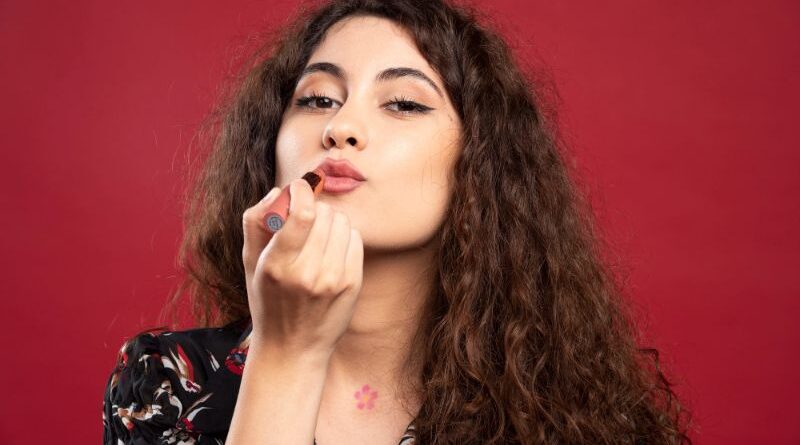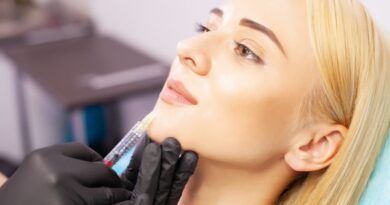In the world of beauty and aesthetics, full and luscious lips have always been a symbol of allure and confidence. Over the years, the pursuit of the perfect pout has led to the rise in popularity of lip fillers. These tiny injections have transformed countless smiles and empowered individuals to embrace their inner radiance.
But what exactly are lip fillers, and how do they work their magic? In this comprehensive guide, we will embark on a journey through the fascinating realm of lip enhancement. From understanding the science behind these injections to considering the benefits and potential considerations, we will equip you with all the knowledge you need to make informed decisions about your lip transformation.
So, whether you’re a beauty enthusiast contemplating lip fillers or simply curious about this captivating cosmetic procedure, join us as we uncover “Lip Fillers: Everything You Need to Know.” It’s time to discover the art and science of achieving the perfect pout while maintaining the essence of your unique beauty.
How does lip fillers function and what is it?

Lip fillers are a type of cosmetic treatment used to enhance the appearance of the lips. They are also known as dermal fillers and are typically administered through injections. Lip fillers are designed to add volume to the lips, create a plumper and fuller look, and reduce the appearance of fine lines and wrinkles around the mouth.
Lip fillers work by injecting a gel-like substance, often hyaluronic acid, into the lips. This substance adds volume, plumps up the lips, and reduces the appearance of fine lines. The filler attracts water molecules, making the lips look fuller almost instantly. The procedure is quick, and the results are temporary, lasting several months to a year or more, depending on the type of filler used.
Types of lip fillers
The two most common kinds of lip fillers are:
1. Hyaluronic acid (HA) fillers
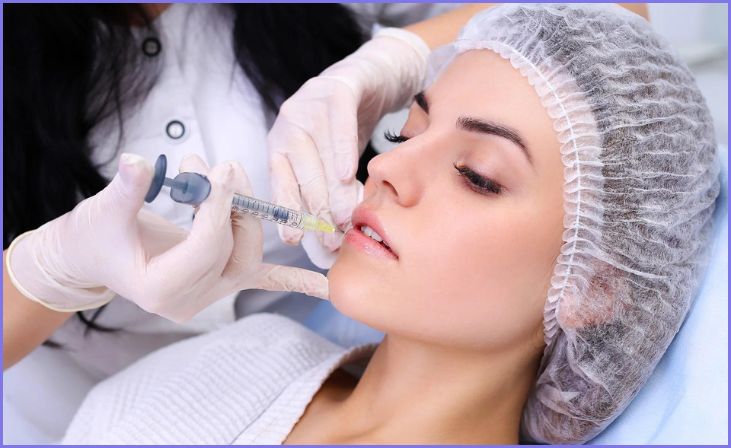
Hyaluronic acid (HA) fillers are a type of dermal filler commonly used for cosmetic enhancements, including lip fillers. HA is a natural substance found in the body that attracts and retains moisture. In filler form, HA is injected into the lips to add volume, definition, and hydration. These fillers are popular because they offer natural-looking results, are generally well-tolerated, and provide temporary effects, typically lasting several months to over a year.
2. Collagen fillers
Collagen fillers are a type of dermal filler used for cosmetic procedures, including lip augmentation. These fillers contain collagen, a natural protein found in the skin that provides structure and elasticity. Collagen fillers work by replenishing the body’s collagen, adding volume to the lips and reducing the appearance of fine lines. While less commonly used today compared to hyaluronic acid fillers, collagen fillers can still enhance lip volume and contour.
Other types of lip fillers include
3. Fat transfer
Fat transfer, also known as autologous fat grafting or lipofilling, is a cosmetic procedure used to enhance various areas of the body, including the lips. In this procedure, fat is harvested from one part of the patient’s body, often through liposuction, and then purified. The purified fat is then injected into the lips to add volume and contour. Fat transfer offers a natural option for lip augmentation as it uses the patient’s tissue.
4. Poly-L-lactic acid (PLLA) fillers
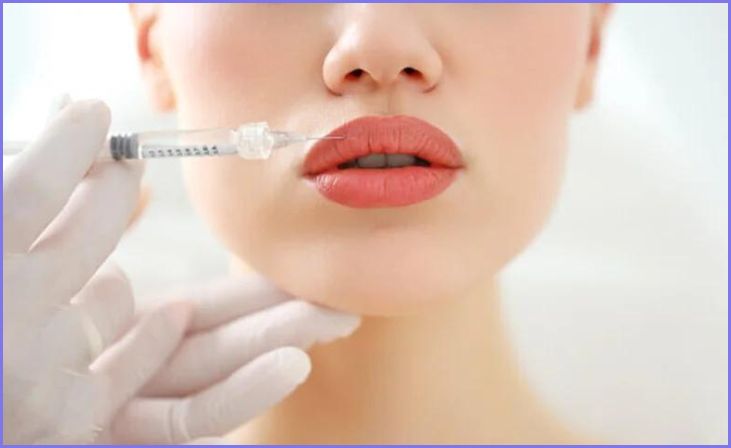
Poly-L-lactic acid (PLLA) fillers, also known as Sculptra, are a type of dermal filler used for cosmetic treatments, including lip augmentation. Unlike hyaluronic acid fillers, PLLA works differently by stimulating the body’s natural collagen production. When injected into the lips, PLLA gradually encourages collagen growth, resulting in improved volume and reduced wrinkles over time. PLLA fillers are valued for their long-lasting effects, which can extend up to two years or more.
How to Pick the ideal lip fillers for your Needs
To choose the right lip filler for you, you should consider the following factors:
- Your desired results: What do you want to achieve with lip filler? Do you want fuller lips? More defined lips? A more symmetrical pout? Once you know what you want, you can talk to your injector about the best type of filler and the amount needed to achieve your goals.
- Your budget: Lip filler can range in price depending on the type of filler used, the amount of filler used, and the injector’s expertise. Be sure to factor in the cost of follow-up appointments when setting your budget.
- Your skin type and tone: Your injector will need to consider your skin type and tone when choosing a lip filler. For example, if you have thin lips, you may want to choose a filler that is more viscous and will give you more volume. If you have darker skin, you may want to choose a filler that is less likely to cause hyperpigmentation.
- Your overall health: If you have any underlying health conditions, such as an autoimmune disease or a bleeding disorder, be sure to talk to your doctor before getting lip filler.
It is also important to choose a qualified and experienced lip injector. A good injector will be able to assess your needs and goals, and recommend the best type of filler for you. They will also be able to inject the filler safely and effectively.
Here are some tips for finding a qualified lip injector
- Ask your doctor for a referral.
- Look for an injector who is certified by the American Board of Cosmetic Surgery or the American Academy of Dermatology.
- Read online reviews of injectors in your area.
- Schedule a consultation with a few different injectors to see who you feel most comfortable with.
Once you have found a qualified lip injector, be sure to discuss your desired results, budget, and any health concerns you may have. They will be able to help you choose the right lip filler for you and achieve your desired results.
You can also use the Instant Lip Filler for Plumped Lips For temporary filler lips.
Instant Lip Filler for Plumped Lips
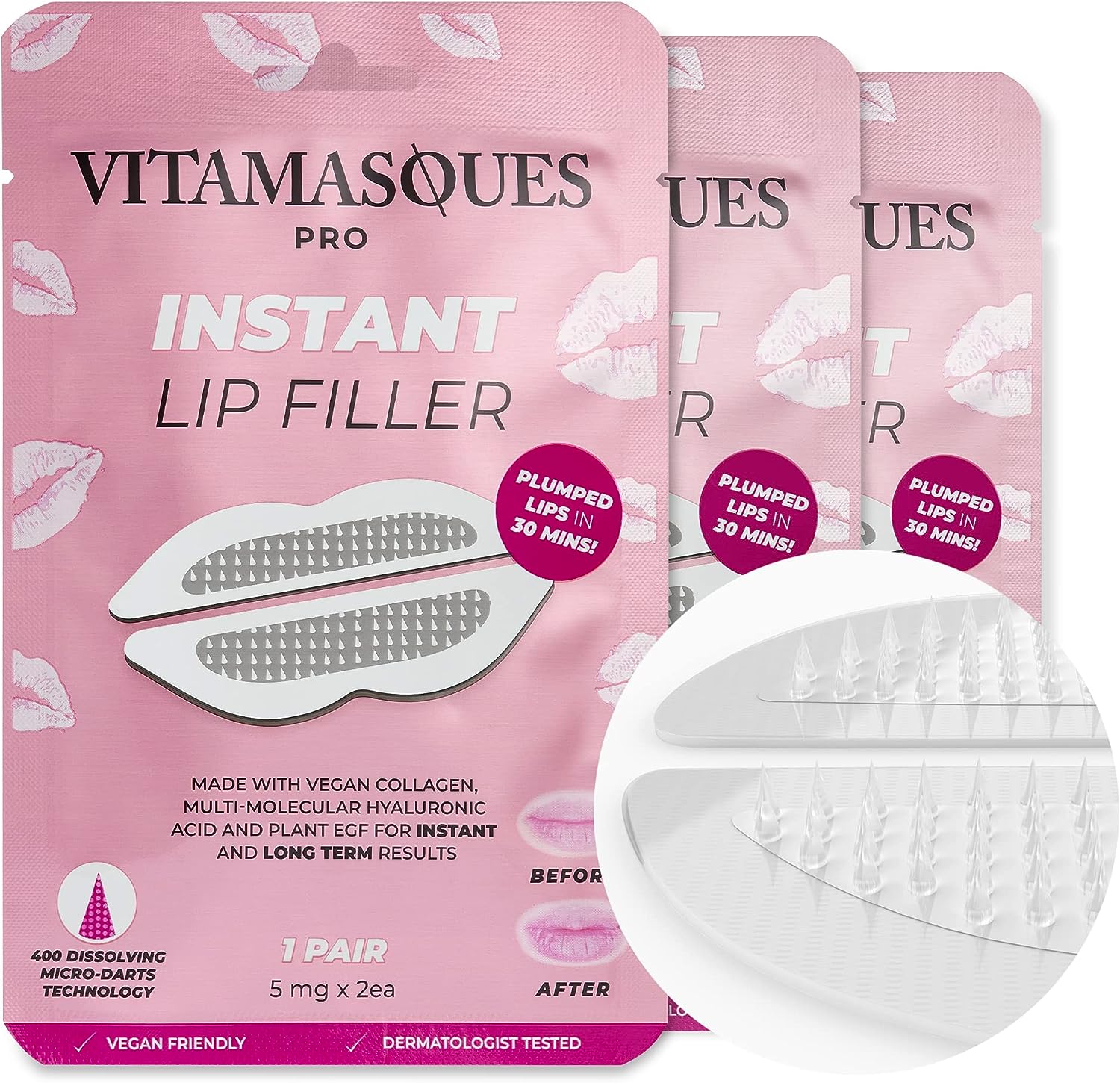
Lip Filler for Plumped Lips
- Brand Vitamasques
- Item Form Sheet
- Skin Type All
- Material Feature Plant Based
- Number of Items 3
What to expect during and after lip fillers injections
Here’s what you can expect during and after lip filler injections:
During the Procedure
Consultation
A consultation in the context of cosmetic procedures like lip fillers refers to the initial meeting between a patient and a qualified healthcare provider. During this appointment, the provider evaluates the patient’s goals, assesses their suitability for the procedure, and discusses the treatment plan. The consultation is a crucial step where the patient can ask questions, express their desires, and gain a clear understanding of the procedure, potential risks, and expected outcomes.
Numbing
Numbing, in the context of cosmetic procedures like lip fillers, involves the use of topical anesthetics or local anesthesia to minimize pain or discomfort during the treatment. These numbing agents are applied to the treatment area or administered via injections to block sensations in the nerves. By numbing the area, patients can undergo procedures with minimal pain or discomfort, making the experience more tolerable.
Injection
An injection, in the context of cosmetic procedures such as lip fillers, refers to the process of delivering a specialized substance, typically a dermal filler, into the target area using a fine needle or cannula. These injections are administered by trained healthcare providers to add volume, shape, and definition to the lips. The chosen filler material is carefully injected to achieve the desired aesthetic results.
After the Procedure
Immediate Results
Immediate results, in the context of lip filler injections, refer to the noticeable changes in the appearance of the lips right after the procedure is completed. When dermal fillers are injected into the lips, they immediately add volume and definition. Patients can typically see the enhancement right away, although there may be some initial swelling or redness. These immediate results provide an instant boost to the lips’ appearance, making them look plumper and more defined.
Temporary Swelling
Temporary swelling, in the context of lip filler injections, is a common and expected side effect immediately following the procedure. It occurs when the body responds to the injection by sending fluids to the treated area, causing the lips to appear temporarily swollen or puffy. This swelling is a natural part of the healing process and can vary in intensity from person to person.
Recovery
Recovery, in the context of lip filler injections, refers to the period following the procedure when the patient’s body adjusts to the filler, and any immediate side effects like swelling or redness gradually subside. The recovery process is generally straightforward, with most patients being able to resume their regular activities within a day or two. During this time, it’s essential to follow aftercare instructions provided by the healthcare provider to ensure a smooth healing process.
Results
Results, in the context of lip filler injections, refer to the outcome of the procedure in terms of the lips’ appearance and enhancement. These results can include added volume, improved contour, and reduced wrinkles or fine lines around the lips. While some immediate changes are visible right after the treatment, the full and final results typically become more apparent once any initial swelling or redness subsides, usually within a few days.
Aftercare
Aftercare, in the context of lip filler injections, refers to the essential steps and practices that patients should follow following the procedure to ensure a smooth and successful recovery. This includes using cold compresses to reduce swelling, avoiding excessive touching or pressing on the treated area, staying hydrated, refraining from alcohol and strenuous exercise for a short period, and adhering to any particular directions given by the healthcare professional.
Natural Look
A “natural look” in the context of lip fillers refers to the desired outcome where the lips appear enhanced yet harmonious and balanced with the individual’s facial features. Rather than an exaggerated or artificial appearance, a natural look ensures that the lip enhancement is subtle and in proportion to the rest of the face. Achieving a natural result is a primary goal for many individuals seeking lip fillers.
The Benefits and Risks of lip fillers
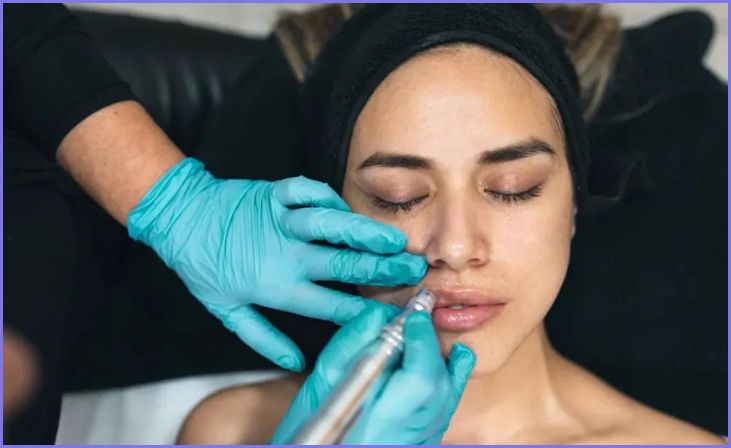
Certainly! Here are the benefits of lip fillers:
- Enhanced Lip Volume: Enhanced lip volume refers to the noticeable increase in the fullness and size of the lips achieved through the use of lip fillers. This cosmetic procedure adds extra volume to the lips, making them appear plumper and more voluminous. It’s a sought-after benefit for those who desire a more prominent and alluring lip shape, enhancing their overall facial aesthetics and confidence.
- Natural-Looking Results: Natural-looking results in lip fillers mean that, when professionally administered, the outcome appears subtle and harmonious with your facial features. Instead of an overly exaggerated or artificial look, the lips maintain a balanced and realistic appearance.
- Quick Procedure: A quick procedure in the context of lip fillers means that the injection process is typically completed swiftly, often within an hour or less. It’s a convenient choice for individuals with busy lifestyles as it requires minimal time commitment. The efficiency of the procedure allows you to fit it into your schedule without disrupting your daily activities significantly, making it a practical option for those seeking lip enhancement.
- Minimal Downtime: Minimal downtime with lip fillers means that the recovery period following the procedure is relatively short and unobtrusive. While some individuals may experience temporary side effects like swelling or bruising, these effects typically subside within a day or two. This minimal disruption to your daily life allows you to resume regular activities promptly, making lip fillers a convenient choice for those with busy schedules.
- Customizable: The term “customizable” in the context of lip fillers refers to the flexibility and adaptability of the procedure to meet your specific preferences and goals. Skilled professionals can tailor the treatment to achieve your desired lip shape, size, and overall look. This means you have control over the outcome, ensuring that the results align with your unique aesthetic vision.
- Boosted Confidence: The benefit of boosted confidence with lip fillers is that enhanced lips often lead to increased self-assurance. When individuals are pleased with their appearance, it can positively impact their self-esteem and overall self-perception. Plumper, well-defined lips achieved through lip fillers can make individuals feel more attractive and self-assured, ultimately contributing to a greater sense of confidence in their daily lives and interactions.
- Temporary Effects: Temporary effects in the context of lip fillers mean that the results are not permanent. Instead, they offer a temporary enhancement to your lips that can last anywhere from several months to over a year, depending on the type of filler used. This temporary nature provides flexibility, allowing individuals to experiment with different looks or decide if they want to maintain the enhancement long-term.
Risks of lip fillers

Certainly, here are some of the potential risks associated with lip fillers:
- Temporary Side Effects: Temporary side effects of lip fillers are common and typically include issues like swelling, bruising, redness, and tenderness at the injection site. These effects are generally mild and short-lived, usually lasting only a few days to a week. They are a natural part of the healing process as the body adjusts to the filler.
- Allergic Reactions: Allergic reactions to lip fillers, although rare, can occur when the body’s immune system reacts negatively to the filler material. Symptoms may include swelling, redness, itching, or hives around the injection site. In extreme circumstances, people might have trouble breathing or have an allergic reaction.
- Lumpiness or Unevenness: Lumpiness or unevenness in lip fillers can occur when the filler material is not distributed evenly or when there are inconsistencies in the injection technique. This may result in noticeable bumps or irregularities in the lips’ texture.
- Infection Risk: The risk of infection with lip fillers exists because the procedure involves injecting material into the skin. Infection can occur if the injection site or the filler itself becomes contaminated with bacteria. To mitigate this risk, it’s crucial to select a reputable and sterile clinic or provider.
- Asymmetry: Asymmetry in lip fillers refers to the possibility of the lips not appearing perfectly balanced or aligned after the procedure. Achieving perfectly symmetrical lips can be challenging, as each person’s natural facial features may have subtle differences.
- Temporary Results: Temporary results with lip fillers mean that the enhancement you achieve is not permanent. The effects gradually diminish over time as the body naturally breaks down the filler material. The duration of these results varies but typically lasts several months to a year or more, depending on the type of filler used.
Recovery of Filler Lips
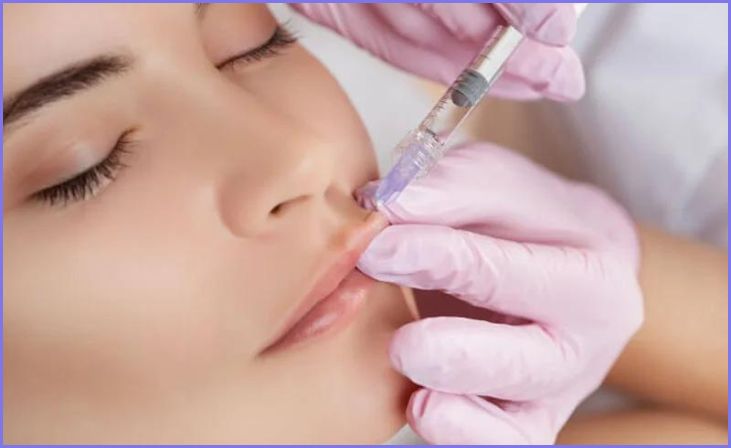
The recovery process for lip fillers is typically straightforward, and most individuals can resume their regular activities relatively quickly. Here’s what you can expect during the recovery of filler lips:
- Immediate Post-Procedure: During the immediate post-procedure period following lip filler injections, it’s common to experience some temporary effects. These may include swelling, redness, minor bruising, and mild tenderness at the injection sites.
- Cold Compress: Using a cold compress after getting lip fillers involves applying a cold pack or cloth to the treated area. This helps reduce swelling and discomfort during the immediate post-procedure period, usually within the first 24 hours.
- Avoid Touching or Pressing: Avoiding touching or pressing your lips after lip filler injections is essential to prevent potential complications. The filler material needs time to settle and distribute evenly within the lips. Excessive touching or pressing can disrupt this process and may lead to lumps, bumps, or uneven results.
- Avoid Extreme Temperatures: Avoiding extreme temperatures, such as exposure to hot saunas or very cold environments, is recommended in the days following lip filler injections. Extreme temperatures can exacerbate swelling and may contribute to discomfort during the initial recovery phase.
- Stay Hydrated: Staying hydrated is a beneficial aftercare practice following lip filler injections. Proper hydration supports the body’s natural healing processes and can help maintain the filler’s effectiveness. Drinking an adequate amount of water not only promotes overall well-being but also contributes to a smoother and more comfortable recovery.
- Avoid Alcohol and Strenuous Exercise: In the immediate aftermath of lip filler injections, it’s advisable to avoid both alcohol consumption and strenuous exercise for at least 24 hours. Alcohol can exacerbate swelling and increase the risk of bruising, while strenuous physical activity may lead to additional swelling and discomfort.
Overall, the recovery process for lip fillers is generally well-tolerated, and any initial side effects are temporary. If you have specific concerns or experience unusual symptoms, it’s essential to contact your healthcare provider promptly for guidance and reassurance.
Best Aftercare Tips for Lip Fillers
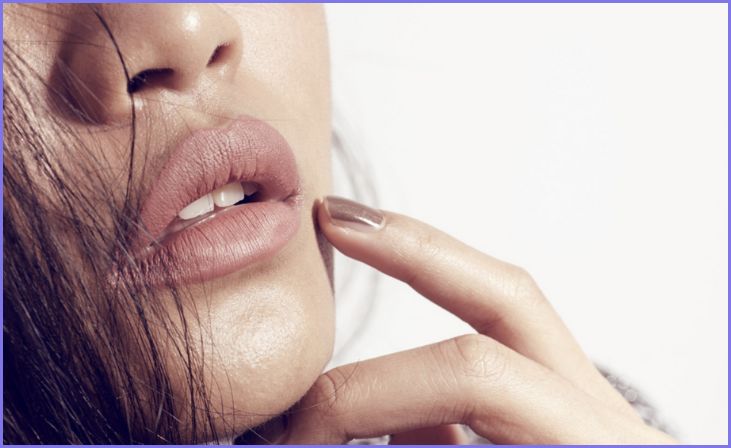
Proper aftercare is essential to ensure a smooth and successful recovery after getting lip fillers. Here are some of the best aftercare tips to follow:
- Follow Provider’s Instructions: Following your healthcare provider’s post-procedure instructions is crucial for a successful recovery after lip filler injections. These instructions are tailored to your specific treatment and will guide you on how to care for your lips in the days following the procedure. They may include guidance on cold compress use, avoiding certain activities, and any necessary follow-up appointments.
- Use Cold Compress: Using a cold compress after lip filler injections involves applying a cold pack or cloth to the treated area. This helps reduce swelling and discomfort during the immediate post-procedure period, typically within the first 24 hours. The cold temperature constricts blood vessels, minimizing inflammation and bruising.
- Avoid Touching or Pressing: Avoiding touching or pressing your lips after lip filler injections is essential to prevent potential complications. The filler material needs time to settle and distribute evenly within the lips. Excessive touching or pressing can disrupt this process and may lead to lumps, bumps, or uneven results.
- Stay Hydrated: Staying hydrated is a beneficial aftercare practice following lip filler injections. Proper hydration supports the body’s natural healing processes and can help maintain the filler’s effectiveness.
- Avoid Alcohol and Strenuous Exercise: In the immediate aftermath of lip filler injections, it’s advisable to avoid both alcohol consumption and strenuous exercise for at least 24 hours. Alcohol can exacerbate swelling and increase the risk of bruising, while strenuous physical activity may lead to additional swelling and discomfort.
You can also Use the Deep Hydration Lip Plumper Peptides Gel for Fuller Lips.
IMAGE Skincare, Ormedic pH Balancing Lip Enhancement Complex
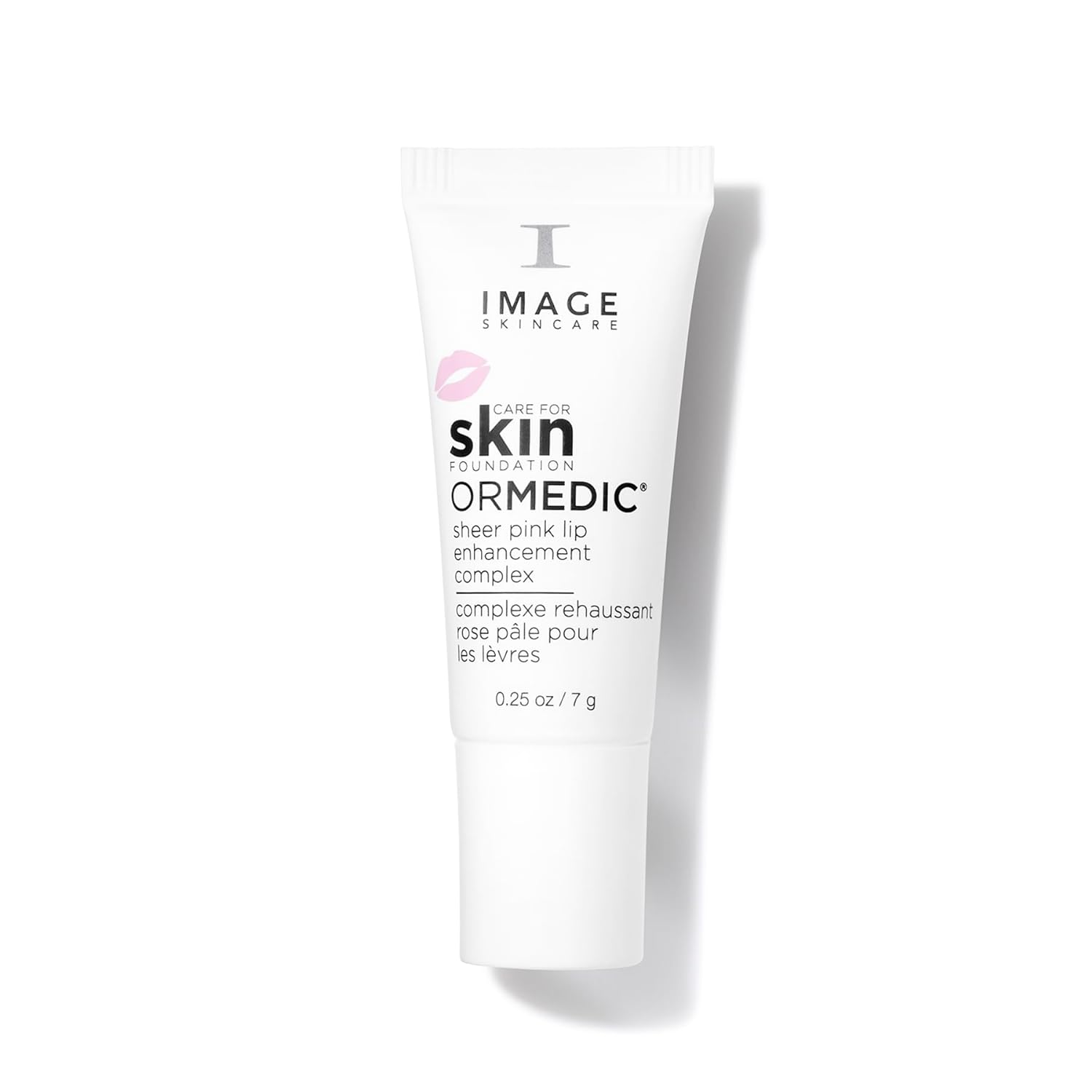
Deep Hydration Lip Plumper Peptides
- Brand Image Skincare
- Item Form Gel
- Finish Type Natural
- Skin Type Dry
- Color Pink
The Bottom Line
In the world of cosmetic enhancements, lip fillers have gained immense popularity for their ability to enhance and redefine one’s lips, providing plumpness and definition. In this comprehensive guide, we’ve explored everything you need to know about lip fillers, from how they work and their benefits to the potential risks and aftercare. It’s essential to remember that while lip fillers offer fantastic results, they are not permanent, and maintaining the look you desire may require periodic touch-up treatments. When considering lip fillers, always consult with a qualified healthcare provider to discuss your goals and ensure a safe and satisfying experience.
FAQs
Lip filler results are typically temporary and can last several months to over a year, depending on the type of filler used and individual factors.
During the process, the majority of people feel just minor discomfort. Providers often use numbing creams or local anesthesia to ensure your comfort.
When administered by a qualified healthcare provider, lip fillers are generally safe. However, there are potential risks and side effects, so it’s crucial to choose a trusted professional.
Yes, skilled providers can achieve natural-looking results that enhance your lips’ appearance without appearing artificial.
Yes, alternatives include fat transfer, lip implants, and permanent makeup. Discuss these options with your provider to determine the best choice for you.

